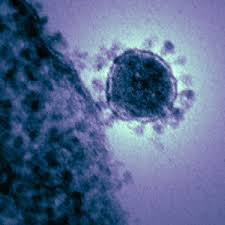Won K. Kim
Why MERS? I am currently majoring in biochemistry and viruses such as this have always interested me. It is fascinating to see how the boring textbook material comes to play in a real-life, even deadly scenario.

Origins: Middle East Respiratory Syndrome Coronavirus originated in bats, who used other domesticated animals such as camels to transmit the virus onto humans. This site details the recent cases of related Coronaviruses as well as previous pandemics that have occurred in the near past such as SARS (Sharif-Yakan). It also mentions the theories of transmission and how scientists were able to originate the virus back to bats.

Symptoms: This website shows that MERS has similar symptoms to that of the common cold and Pneumonia (Sharif-Yakan). It also mentions how the virus can weaken the immune system so other infections are more prone to damage the body.

MERS Today: These articles say MERS is trying to be contained and is global. It states that scientists have yet to develop a vaccine and that many countries are taking precautions for emigrants and immigrants. Methods of transmission are unknown as of now; however, significant development is continuing to be made ("Middle East Respiratory Syndrome").

MERS Vaccine: Institutions such as Greffex here are being funded by national government agencies to develop a vaccine to prevent further spread of the virus. This works by injecting the person with just the right amount of viral hosts such that the body can suppress the infected hosts and mass produce humoral antibodies to deploy in the case of an actual infection.

How MERS Works: This website shows how basic coronaviruses are spread. Although the details of the transmission and mechanics of MERS are still vague and/or not released to the public, coronaviruses generally originate from other animals and are characterized by their physical crown-like spikes on their surface ("What is MERS? What you need to know").